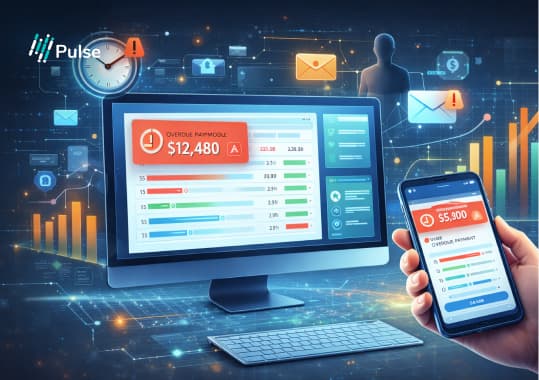The finance industry has been evolving constantly over the years. Previously relying more on personal interactions and traditional practices, the sector is undergoing a rapid evolution with the introduction of technology. Financial data has become increasingly critical, owing to its utility and importance when used in tandem with tech-driven solutions. Data is utilised in formulating strategies, determining trends and revolutionising the decision-making process. The real challenge does not lie in collecting data but in harnessing its full potential, the process of turning numbers into actionable business insights.
This is where advisory technology has helped change the game. It helps transform raw data into useful insights and strategic guidance. We will delve deeper into how advisory technology is transforming how we perceive and work with financial data and its implications.
Understanding Advisory Technology
Advisory technology refers to software and technology that is both advanced and offers greater flexibility and utility when dealing with financial data. Its primary purpose is to analyse and interpret data, transforming it into intuitive insights and actionable observations. Instead of merely providing data-based reports, advisory technology uses complex algorithms and AI to predict trends, analyse risks and isolate promising opportunities.
Now that we have an understanding of what an advisory tool does, let us explore how raw data is transformed into actionable insights. There are a series of steps or phases as follows:
Data Collection and Integration
The first step is to collect financial data from various sources. This would include but is not limited to sales, reports, bank accounts, accounting software, operational metrics and other statistics or data provided by the client. Advisory tools collect scattered or unorganised data and turn it into a cohesive system or data flow. The primary objective is to filter relevant data, align it and make it easily accessible.
Data Analysis
Once data is collated and integrated, the next phase involves data analysis by harnessing AI and advanced algorithms. Financial data is analysed in great detail beyond broad spectrum reports. The data is scoured for patterns, correlations or irregularities. For example, it has the power to isolate subtle changes in the sales turnover, which can indicate a decline in the near future. Once this pattern has been identified, it will be highlighted, allowing the business to take immediate action to ensure that business goals remain on track.
Predictions and Forecasts
Advisory technology allows for the creation of future trends and forecasts by utilising historical data and cross-referencing it with current data. This helps the business predict changes in market conditions, adjust strategies, or make educated decisions to grow and improve.
Recommendations and Actionable Insights
The last step in the process is when advisory technology transforms these observations and learnings into actionable insights and strategic recommendations. Instead of providing surface level reports based off of data, advisory technology provides strategic advice. For example, it may recommend shifting resources to focus on a product that is more profitable compared to the current scenario.
A good example of technology that enables this is Pulse, a powerful data analytics portal designed to provide a clear overview of key metrics and trends. It possesses a plethora of intuitive features designed to empower clients. Pulse functions as a powerful advisory tool and helps clients make informed decisions to drive growth and build sustainable long-term success. There are a variety of useful features, including the following:
Staying Ahead with Real-Time Updates
Advisory technology allows businesses to get instant notifications on crucial matters such as VAT returns or a slump in sales volumes. Advisory tools like Pulse keep you informed so you can act quickly when it matters most.
Simplified Management and Accounts Overview
Advisory technology allows clients to view profit and loss accounts and balance sheet data at the click of a button. Pulse pulls data from accountancy packages and displays it in easy-to-understand formats to facilitate quick action.
Some other Pulse features include visualisation of sales and turnover trends, setting and tracking business goals and even a monthly update on your credit score. This would help clients keep track of their credit. It allows small businesses to leverage their credit score and explore financing options when they are ready to take their business to the next level with SME or financing options.
Benefits of Advisory Tools and Technology
Augmented Decision Making
Advisory technology provides detailed insights along with predictive forecasting. It empowers businesses with real-time data analytics and information to make swift and informed decisions. You no longer need to rely on human intuition or guesswork. Instead, you can use advanced technology and factual data to your advantage.
Improved Efficiency
Advisory tools and technology also allow for the automation of rudimentary and repetitive tasks. Not only does this enhance efficiency, but it frees up valuable time and resources. The business can then shift focus to the larger picture and work on strategy instead of occupying itself with basic tasks.
Risk Analysis and Management
Identifying potential risks early on and taking remedial action is extremely important. This is especially critical in the finance industry. Advisory tools and technology allow for the detection of irregularities and anomalies by studying trends and patterns. The business can then take precautionary steps to help avert these risks, mitigate them and ensure that goals remain on track.
Conclusion
Advisory technology is a quantum leap forward in the finance industry. Data has always been at the core of the financial sector. With rapid digitalisation, it has become imperative for businesses to stay up to speed. Traditional practices are being abandoned as businesses continue to look for digital solutions. While transforming raw data into actionable insights is crucial, harnessing advisory tools is the way forward. Businesses can leverage real-time data to mitigate risk and make informed decisions or study trends and future forecasting. Businesses are becoming increasingly aware of and investing in advisory technology and prioritising it. In a data-driven world, leading the change and embracing a smarter, faster and more effective way to grow your business with technology and advisory technology in your corner makes far more sense.
Related Blogs


